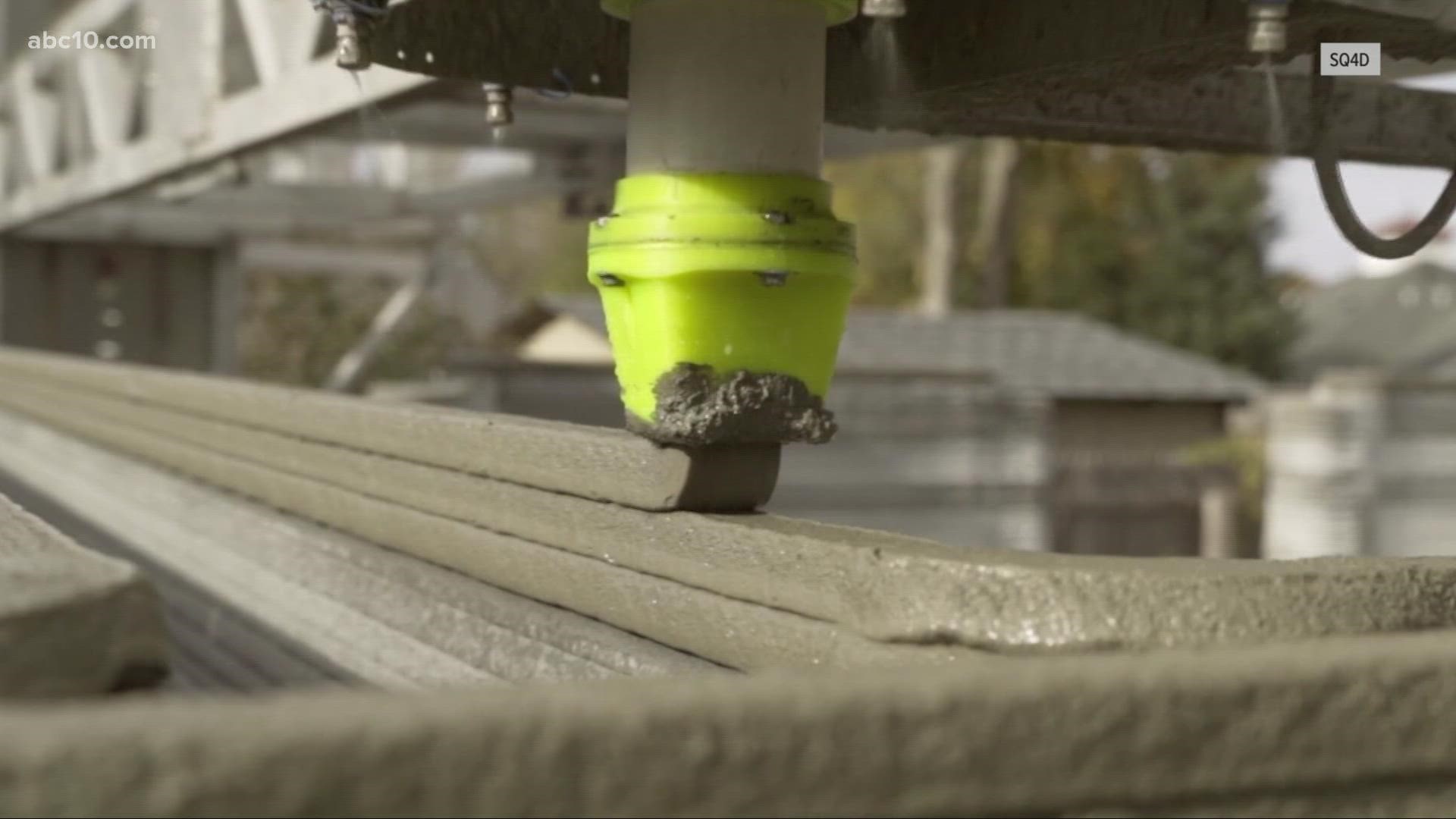'The number one need in every single community is housing' | How 3D printed homes are hoping to fill a void in California
Manufacturers and researchers across the country weigh in on if 3D printing could save the housing crisis.

Article What to know about 3D printed homes
You've likely heard of 3D printers. Now, some companies have made them large and complex enough to print houses.
Kristen Henry is the chief technology officer at SQ4D, a New York-based technology construction company that makes 3D printers that can build houses.
"A lot of people are starting to become familiar with small-scale plastic 3D printers," Henry said. "Concrete 3D printing is not significantly dissimilar to that. Obviously, instead of using plastic filament, we are using this concrete material that we are extruding in layers that we then stack. And as we go up and stack the layers, the layer below has cured enough such that it is strong enough to support the weight."
Henry went on to say with concrete 3D printing, there is no formwork or molds or anything required.
"We're able to just stack the beads of concrete on top of each other," Henry said. "So unlike pouring where you have to construct the formwork and then let the concrete cure, we are just stacking layers as we go with no manual forming required."
All of SQ4D's 3D-printed houses are made of concrete. Recently, a 1,407 square foot project took 80 hours to print in just under 20 days.
Zachary Mannheimer is the founder and CEO of the Iowa-based company Alquist. Even though they're based in the Midwest, they've built homes in Virginia and Oregon. And maybe soon California.
"We are a 3D printing construction company but our goal is to create community and economic development and we're doing that by creating the housing," Mannheimer said. "The number one need in every single community is housing. You can't create community or economic development if you don't have anywhere to live."
Mannheimer's company just built the first 3D owner-occupied home in the world with Habitat for Humanity. Now they're looking to change the way houses are built.
"The construction industry has not adapted or changed in any meaningful way in well over 100 years," Mannheimer said. "We looked at a variety of ways to drop costs. We looked at modular housing, manufactured housing, and both of those certainly work. But we think 3D housing not only allows you to drop the cost of housing but also customize the home in a much more unique, innovative way."
How much of a saving is there? Mannheimer says significant. And those savings don't just come from materials. He said a 3D printed home built with concrete would use less energy compared to a traditional stick-built home.
"So right now, we know that 3D printing just in general will save between 10 and 15 percent versus a traditional stick-built home," Mannheimer said. "In a place like California, it's probably going to be significantly higher. Just because of the average price that folks are paying for homes."
So why aren't we seeing more 3D housing?
"We are averaging roughly 50 requests per hour for 3D homes right now since Christmas," Mannheimer said. "It's been crazy. Every state in the nation has reached out. There's over 12 countries in the world that have reached out to us. So we can't keep up with this demand. There's needs to be 50 more companies like this, to really fill the gap we see, especially in a place like California."
But is 3D printing the solution for California's housing crisis? Tyler Pullen, a PhD student in urban planning at UC Berkeley's Terner Center for Housing Innovation, said housing is so complex and the idea is too new to say completely if it is the answer.
"They're coming at it from the perspective of a pretty fundamentally different way of doing construction," Pullen said. "Maybe there's plenty of time savings and cost savings to be seen, but I think my reflex is I haven't yet seen them. And I don't think there is anyone size fits all silver bullet to the housing crisis, especially affordable housing."
Video
ABC10: Watch, Download, Read
Watch more from ABC10
Northern California growing into 'mega-region' as people moving from the Bay to Sacramento doubles



















